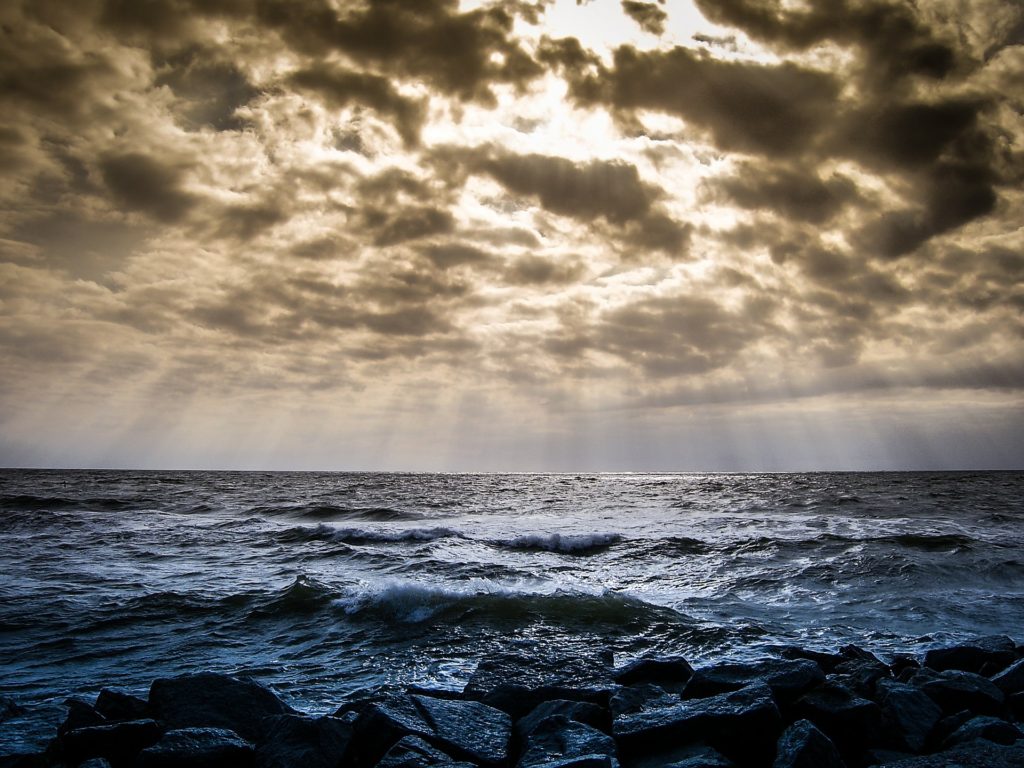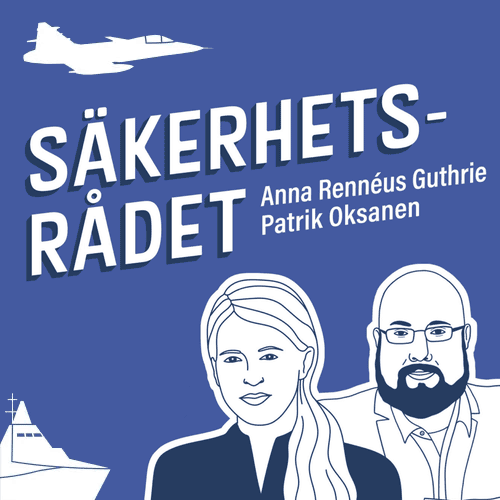The strategic situation in the Baltic Sea is a hotspot. 8-10th of December the Defence universities in Sweden and Finland, in cooperation with the Latvian ministry of Defence and Baltic Defence College, arranged the seminar ”Workshop on Strategy and Security Policy in the Baltic Sea Region. From this seminar we are publishing the speech of Mr Anders Ljunggren, the former Swedish ambassador to Estonia and Iceland.

Bild av Michal Jarmoluk från Pixabay
There is a fundamental challenge or conflict in the Baltic Sea Region. It’s really about the world order. Should the legal system be based on respect for the right of all states to determine their own security system and that no border change may take place by one state using force to conquer territory from another?
Yes. This is the order that all relevant states signed at the Helsinki Conference in 1975 – an order that was confirmed by the Paris Charter in 1990. Today, 57 states have acceded to these documents and they are affiliated with the OSCE, whose task it is to maintain this order.
Russia also signed the final document in Helsinki. Other OSCE member states, however, claim that Russia does not respect the agreed legal order. In 2008, Russia intervened with military force in South Ossetia and Abkhazia and in 2014 in Ukraine. Russia has illegally annexed Crimea and is involved in the use of military force in eastern Ukraine.
Russian President Vladimir Putin said two years ago that he would reverse the collapse of the Soviet Union if he had a chance to alter modern Russian history. Putin has since argued that the countries that created a new global order after World War II should “cooperate to solve today’s problems”. What happened after the Second World War was, among other things, that Europe was divided into spheres of interest.
We have a conflict in the Baltic Sea region. We have mistrust of the security arrangements the countries have agreed upon. We have one state, Russia, that has repeatedly acted in violation of it.
We have several challenges when it comes to security in the Baltic Sea region. A key issue is whether confidence in a common security system can be restored. That would be the best. But the assessment is that this will be very difficult in the foreseeable future.
As long as mistrust of the current security regime persists, the task is to maintain peace without trust between all states. The states must act so that neither Russia nor any other state believes that they would gain anything from using force in the region.
I would argue that in the situation we now are in, in the Baltic Sea Region, cohesion in the EU and in NATO is the most important challenge. The stronger the confidence in the cohesion of the EU and NATO, the lower the likelihood of military use of force in the Baltic Sea region.
Each state is first and foremost dependent on its own will and ability to assert its security. But all states depend on cooperation with others, especially in the case of a potential conflict with a country like Russia. This also applies to the militarily non-aligned states Finland and Sweden.
Sweden and Finland are now preparing for being able to give and receive support in crises, from each other, ”beyond peace”. No other partnership than that of Finland or Sweden has closer cooperation with NATO. The two non-aligned states also have special cooperation agreements with the United States and are increasingly participating in increasingly large-scale exercises with the NATO states.
During President Trump’s four years, the transatlantic link has been weakened. We have had a situation where not only Russia and China but also the United States have sought to divide EU and NATO member states. There is good hope that the link will be strengthened again under President Biden.
The transatlantic link is important. Security in the Baltic Sea region and the situation in the North Atlantic and the Arctic are closely linked. And vice versa. One challenge is to build transatlantic cooperation strong regardless of whoever is president of the United States. This means that European states need to take greater responsibility for the strength of the transatlantic link. The US, independently of the president, is said to have increased its focus on the Pacific. But the US will still be important for security in the Baltic Sea Region.
Unfortunately, the cohesion of the EU and NATO is not as strong as it should be in order to take greater responsibility for the transatlantic link. The situation is perhaps most difficult in the eastern Mediterranean. It is actually in the neighborhood of the Baltic Sea region. Already the Crimean War in the 1850s showed this.
In the EU, the challenge is to defend the Union as a community of values and at the same time develop a real capacity to act as a foreign and security policy actor – especially in the geographical proximity of the Union.
The situation is not at all hopeless – but it is demanding. EU and NATO members, as well as NATO partners, in the Baltic Sea Region have every reason to contribute to a strong transatlantic link and to strong cohesion between member states in Europe.
Inevitably, the security situation in the Baltic Sea Region and in its immediate neighborhood is most important, especially with regard to defense policy. The lack of cohesion in a larger context only underlines this relationship.
The map in the Baltic Sea region has changed a lot and quite often. In a historical perspective. Estonia and Latvia have their longest period of independence now – after 1991. On Sunday, Finland celebrated its 103rd Independence Day. For Lithuania and Poland, it is just over 100 years since the states re-established independence.
The maps of Lithuania, Poland and Germany do not look like they did before the Second World War. Finland managed to maintain its independence with great sacrifices during the war but was forced to declare loss of territory. Sweden is the only country in the region whose territory is the same today as just over 200 years ago. We Swedes do not always understand that we are the different country – that other countries in the region have war and occupation as experiences in their modern history.
For the Nordic states and also for Nato the situation is radically different now compared to the situation during the Cold War. When NATO and the Warsaw Pact stood against each other on the continent during the Cold War a country like Sweden judged that it would be possible to stay out of a war.
Now the situation has completely changed. Today, it is in the Baltic Sea region that Russia and NATO share a border in Europe. Should war break out between Russia and NATO, a country like Sweden, like other states in the region, must expect to be involved from day one in a military conflict between Russia and NATO.

Bild av WikiImages från Pixabay
Estonia, Latvia, Lithuania and Poland now have a military presence from other NATO countries. This does not pose a military threat to Russia – it fulfills the same function as Allied troops did in West Berlin during the Cold War. There is no immediate threat of military violence in the Baltic Sea region – although mistakes and misunderstandings can never be ruled out. But if NATO assistance is needed to secure or restore the sovereignty of the Baltic states, everyone knows that access to Swedish territory is very important.
Sweden, like other EU states in the region, has increased its defense budgets following Russia’s illegal annexation of Crimea. Some, such as Estonia, had already increased their defense investments before Crimea, some, such as Finland, had never made such large cuts in their defense budgets as Sweden and some others did after the breakdown of the Soviet Union.
But there is an insight that increased national funding for defense is not enough. Cooperation between states has been strengthened. Today, NATO has war planning and an organization that is significantly more capable of acting if a war erupts in the Baltic Sea region. Cooperation within the EU has also developed.
More and more defence collaborations have emerged in the Nordic region and the Baltic Sea Region. Bilateral, trilateral, Nordic, Nordic Baltic, etc. in addition to the co-operation within and between the NATO states.
Working together in a crisis is not self-evident – and not easy. We have seen it during the time we lived with COVID-19. When it comes to security, all states are affected by their perception of their own history. A statesman who experienced practically the entire 20th century has cynically stated that when war threatens or occurs, it is a rule that all states act to take advantage of their perceived self-interest.
The states around the Baltic Sea have very different histories. This is shown in the composition of The Northern Group – a defense initiative taken by the UK in 2010. In addition to the five Nordic states Denmark, Finland, Iceland, Norway and Sweden, the three Baltic states of Estonia, Latvia and Lithuania are included in the group, as well as the Netherlands, Poland, Great Britain and Germany. In addition to the militarily non-aligned Finland and Sweden, the group includes five states that during the Cold War belonged to NATO and four current states that during the Cold War were part of the Warsaw Pact, three of which then as part of the Soviet Union, and Germany, which miraculously consists of a former NATO member and a former Warsaw Pact State.
Ten of the twelve states in the Northern Group are now members of NATO but they carry a self-perception influenced by a history that stretches far further back in history than World War II. This is also the case with Sweden and Finland, despite the fact that these two states have 600 years of common history.
A real challenge is to achieve such a defense co-operation and such a political community which entails that the decisions made when it really matters are not based on a perception of the narrow, but the enlightened, self-interest. A strategy for future security that makes the enlightened self-interest crucial is important.
A final point. Security is not just a matter of weapons and military power. It can be argued that war is going on in our region today, in the form of disinformation, cyber attacks and actions by intelligence services. Hybrid warfare is nothing new, nor is it anything new in the future. Some steps are carried out here and now.
We need cooperation here and now. Particularly useful is cooperation in hybrid and cyber issues, in issues related to digitization and disruptive technologies, such as artificial intelligence, as well as in the promotion of military mobility. Not to mention in the handling of pandemics.
I will end with a few questions:
Can we promote such a community of values within the EU and NATO that action by these organizations can be trustworthily expected if and when a crisis comes to the Baltic Sea Region?
Can the states of the Baltic Sea Region at all influence the security policy consequences of the risk of growing tension and conflict between the United States and China? If so, how can it be done?
Is it at all possible to claim that the member states of NATO and the EU in the Baltic Sea Region have a common strategy and security policy? What is needed for such a strategy or policy to be credible?
And finally: Why not the best?
How can a strategy be developed where Russia will be as reliable in acting in accordance with the Helsinki Agreement and the Paris Charter as other countries in the Baltic Sea Region are expected to be?
Anders Ljunggren
Former Swedish ambassador to Estonia and Iceland.
